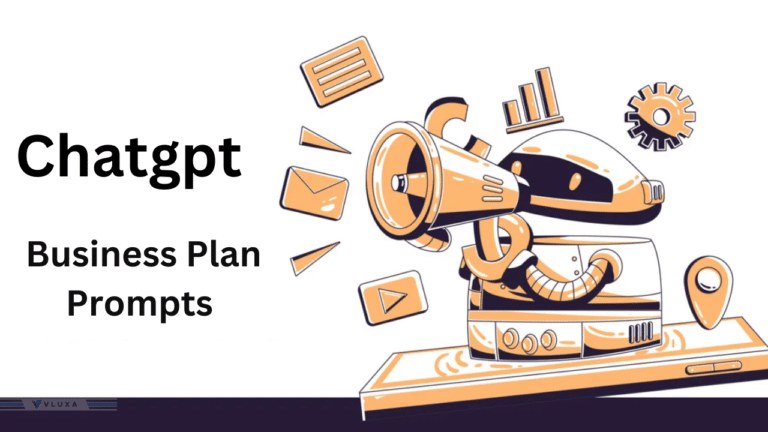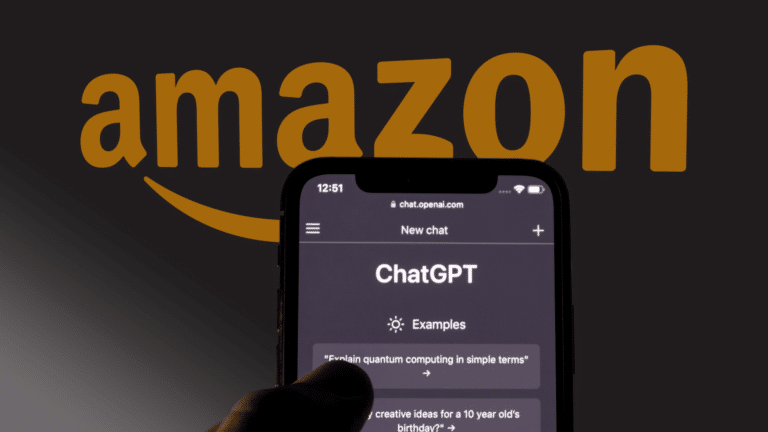Language models like ChatGPT play a crucial role in enabling machines to understand and generate human-like text, thus advancing conversational AI systems and learning to provide a detailed response. The current models usually guess, but with ChatGPT, trained on an Azure AI platform, we aim for a more nuanced comprehension, aligning with the goals of developing increasingly safe and useful AI, leveraging the capabilities of ChatGPT.In the realm of conversation and dialogue systems, OpenAI’s GPT (Generative Pre-trained Transformer) models, including ChatGPT, have made significant strides in optimizing language models for dialogue applications.
Also, read about amazon-gpt-66x
How does ChatGPT work in optimizing language models for dialogue?
ChatGPT is a powerful language model developed by OpenAI specifically for conversational AI applications, embodying the principles of detailed responses and engagements from both sides—the user and an AI assistant.
Understanding the architecture of ChatGPT is essential to grasp how it optimizes language models for dialogue, leveraging insights from its sibling model developments, including chatgpt is a sibling model to GPT-3.5. The model utilizes a transformer architecture that allows it to process and generate text in a conversational format, making it ideal for dialogue systems and reinforcing its utility as a chatbot foundation.
ChatGPT is fine-tuned using a large amount of conversational data to help it generate human-like responses in a dialogue setting, a process central to ChatGPT optimizing language models with input from specific dialogue datasets.
The training data is crucial in teaching the model how to answer correctly and provide information that aligns with the dialogue context, a key component in the capabilities of ChatGPT for improving dialogue management.
InstructGPT, a chatbot guide, is used to guide the model during training, ensuring it learns to generate responses that look and feel human-like, an example of artificial intelligence aiming to assimilate clarifying questions for better interaction quality.
ChatGPT and GPT-3.5 were trained using a dialogue dataset mixed with the InstructGPT examples, and took conversations that AI trainers provided to achieve this, reflecting how the model played both sides—the user and the responder.
Applications of ChatGPT in dialogue systems
ChatGPT’s applications extend to various dialogue systems, including chatbots, virtual assistants, and AI systems, as it’s evolved and given a slight rephrase in user interactions.
These systems benefit greatly from ChatGPT’s advanced language translation functionalities, especially since it was trained on an Azure AI platform for better accuracy, exemplifying cutting-edge technology in artificial intelligence.
By leveraging this state-of-the-art language model, we enhance global communication and move towards increasingly safe and useful AI, highlighting the role of cutting-edge technology in advancing artificial intelligence.
By utilizing ChatGPT, developers can create conversational agents that engage with users naturally and effectively, enhancing the overall user experience through the usage of chatgpt in varied application scenarios.
What is the significance of optimizing language models for dialogue using OpenAI GPT?
Optimizing language models like ChatGPT using OpenAI GPT is crucial for advancing conversational AI capabilities, aiming for increasingly safe and useful AI, reflecting the ongoing evolution of language models in dialogue optimization through cutting-edge technology.
Efforts are focused on creating a state-of-the-art language model of the 3.5 series that surpasses current benchmarks even in the face of well-known over-optimization issues.
Introducing ChatGPT to get users’ feedback in the optimization process is beneficial, demonstrating how the model would incorporate user feedback to refine its conversational abilities, and acknowledging that ChatGPT sometimes might not fully grasp the context without it.
By fine-tuning these models with human AI trainers, developers can address bias in dialogue systems and ensure that their AI assistants provide inclusive and unbiased responses to users from diverse backgrounds.
Enhancing conversational AI capabilities
The optimization of language models for dialogue enhances conversational AI capabilities by enabling systems to engage in more natural and contextually relevant conversations with users, mimicking chatbot interactions.
This results in a more immersive and satisfying conversational experience for users interacting with AI assistants, making the model’s answers look and feel more human, achieving a detailed response that covers both sides—the user and an AI assistant.
Introducing ChatGPT to get users’ feedback through input phrasing adjustments, including instruction in a prompt, is pivotal in achieving this level of refinement, showing how the model played both sides—the user and the AI—to garner insights.
We are excited to introduce ChatGPT into our feedback loop to make the model even smarter, increasingly aiming for safe and useful AI systems, and we are looking forward to getting more clarifying questions from users to improve further.
Addressing bias in dialogue systems
Bias in dialogue systems can lead to skewed or discriminatory responses, impacting user trust and satisfaction, a challenge that Azure AI supercomputing infrastructure aims to mitigate by providing the computational power necessary for more nuanced understanding and response generation.
By optimizing language models using OpenAI GPT, developers can employ a reward model to mitigate bias and ensure that their AI systems, such as ChatGPT, provide fair and inclusive interactions with users.
Utilizing GPT for developing chatbots and virtual assistants
Developing chatbots and virtual assistants powered by GPT models offers a range of benefits, including the ability to handle complex dialogue scenarios, understand natural language processing nuances, and provide personalized responses tailored to individual users.
How to use ChatGPT for fine-tuning language models in dialogue applications?
Fine-tuning ChatGPT for specific dialogue tasks involves several key steps, including supervised training to ensure the model can generate human-like responses effectively and moderation API to maintain content quality. Preferring longer answers that look more comprehensive is a principle that drives the fine-tuning process, along with the goal to provide a detailed response, given a slight rephrase to address user inquiries more effectively.
Introducing ChatGPT to get users’ feedback is an essential step in this process, providing a direct channel for implementing iterative improvements based on detailed responses, thereby creating increasingly safe and useful AI systems. Excited to introduce ChatGPT, refined through RL training, to further enhance dialogue systems with user input and use the same methods as sibling model to InstructGPT.
Choosing the right dataset plays a crucial role in optimizing language models, as it provides the trainer with diverse examples to train the model effectively, including scenarios where human AI trainers provide conversations.
Trainers prefer longer answers that look more comprehensive during the training process, as AI trainers rank the responses for effectiveness in conversational language learning, a practice bolstered by introducing a model using proximal policy optimization.
Introducing ChatGPT to get users’ feedback and mixing this new dialogue dataset with the InstructGPT examples, a sibling model to InstructGPT, can further enhance the training process, especially since ChatGPT sometimes requires real-world feedback for substantial improvement.
Choosing the right dataset for optimizing language models
When fine-tuning ChatGPT, selecting a relevant and diverse dialogue dataset, including those conversations that AI trainers compiled, is essential to expose the model to a wide range of dialogue scenarios.
Mixed this new dialogue dataset with the InstructGPT examples for optimal training, aiming to train the model with human AI trainers provided conversations for better outcomes in the realm of conversational AI systems.
This helps the model learn to adapt to different conversational contexts and generate responses that align with the intended dialogue format, a hallmark of ChatGPT to get smarter over time through iterative improvements and detailed responses.
Making the model adapt to these contexts is crucial for sophisticated dialogue management, showcasing the model’s capabilities in modifying its responses based on clarifying questions to enhance engagement.
Utilizing ChatGPT API for dialogue applications
The availability of ChatGPT API, including a moderation API, simplifies the integration of the model into various dialogue applications, enhancing the capabilities of conversational AI systems. Developers can leverage the API to incorporate ChatGPT’s powerful language capabilities into their applications, thus enhancing the conversational experience for users with a sophisticated chatbot utilizing specific dialogue datasets.
Excited to introduce ChatGPT as a state-of-the-art language model to enhance applications, marking a step forward in the use of cutting-edge technology in artificial intelligence, acknowledging that ChatGPT sometimes learns from each interaction to become more effective. Incorporating ChatGPT’s feedback mechanism is also advantageous for adaptive learning, contributing to the goal of safe and useful AI systems.
This approach emphasizes the importance of user feedback in the development of artificial intelligence, making models like ChatGPT learn about its strengths through such interactions. By doing so and incorporating RL training, we make the model more responsive to user needs over time, ensuring it’s trained to follow user-centric guidelines for improved engagement, and reinforcing the model’s advancement through user feedback.
What programming languages are compatible with optimizing language models like ChatGPT?
Integrating ChatGPT with different programming languages offers developers the flexibility to customize the model for specific dialogue tasks, ensuring the model is trained to follow the nuances demanded by various applications.
This customization is pivotal in making the model more versatile across different platforms, contributing to the development of safe and useful AI systems, using the same methods as its sibling models. This includes incorporating ChatGPT to get users’ feedback for iterative improvements, underscoring the model’s ability to adapt based on user feedback, a critical aspect of developing responsive artificial intelligence.
Excited to introduce ChatGPT as a means of evolving through user interactions, aiming to learn about its strengths and areas for improvement, since ChatGPT sometimes requires adjustments based on user feedback. By leveraging ChatGPT in various programming scenarios, developers can enhance the functionality of their applications and improve the accuracy of their AI systems, now better informed by training on an Azure AI platform.
Customizing ChatGPT for specific programming tasks
Customizing ChatGPT for specific programming tasks enables developers to tailor the model’s responses to meet the requirements of their applications, illustrating the flexibility and adaptability of chatgpt to get tailored outputs.
By integrating ChatGPT with programming languages such as Python, JavaScript, and Java, developers can create more dynamic and responsive chatbot dialogue systems, addressing previously incorrect or nonsensical outputs.
Benefits of using ChatGPT in various programming scenarios
By using ChatGPT in different programming scenarios, developers can leverage the model’s capabilities to enhance the user experience, automate responses to common queries, and improve the overall efficiency of their applications.
ChatGPT’s versatility makes it a valuable asset for developing advanced dialogue systems, leveraging the Azure AI supercomputing infrastructure for enhanced performance, and being trained to follow specific conversational cues. ChatGPT is pre-trained, offering a great start for creating sophisticated systems.
How can ChatGPT’s fine-tuning process generate human-like responses in dialogue systems?
ChatGPT’s fine-tuning process involves utilizing reinforcement learning from human feedback (RLHF), as well as supervised training, to train the model effectively, guided by a sophisticated reward model.
This method, enriched by RL training, helps make the model more refined over time by learning from user interactions and using the same methods as sibling models, acting under the principle that there’s currently no source of truth more potent than real-world use.
By incorporating human feedback and employing methods like RLHF into the training process, developers can improve the model’s conversational abilities and ensure it generates responses that closely resemble human interactions.
Developing AI assistants with human-like conversational abilities using ChatGPT
By fine-tuning ChatGPT through supervised learning and reinforcement learning from human feedback, developers can create AI assistants with advanced conversational abilities, showcasing the capabilities of ChatGPT in enhancing artificial intelligence.
Incorporating ChatGPT’s capabilities into the tuning process enhances it further towards creating increasingly safe and useful AI, demonstrating the significance of cutting-edge technology in the evolution of language models in dialogue optimization.
Making the model, now improved with RL training, adapt more effectively to varied dialogue tasks is a key goal for achieving increasingly safe and useful AI.
These assistants can engage users in meaningful dialogue, provide accurate responses, and exhibit human-like conversational behaviors, showcasing the model’s ability to generate answers that look convincingly human.
Improving dialogue model accuracy through supervised fine-tuning with ChatGPT
Supervised fine-tuning with ChatGPT, a language model trained by OpenAI, enables developers to enhance the accuracy of their dialogue models by providing targeted training examples and feedback to the model.
This process helps the model learn to generate contextually relevant responses that align with the dialogue context, improving the overall quality of interactions with users, a cornerstone of chatgpt optimizing language models for more natural dialogue.
FAQs
Q: What is ChatGPT?
A: ChatGPT is a large language model developed by OpenAI that has been optimized for dialogue and conversation, marking it as a prime example of chatgpt optimizing language models for better human-computer interaction.
Q: How is ChatGPT different from other language models?
A: ChatGPT has been specifically optimized for dialogue, making it more suitable for generating human-like responses in conversation settings, embodying the goal of chatgpt optimizing language models for more natural interactions.
Q: What is the role of prompts in using ChatGPT?
A: Prompts are input statements or questions provided to ChatGPT to guide the generation of responses that align with the desired context or topic, showcasing the usage of ChatGPT in creating dialogue that looks human-like.
Q: How does ChatGPT use prompts to generate responses?
A: ChatGPT leverages prompts to influence the responses it generates, ensuring that the output is relevant and coherent within the given context, demonstrating the model’s sophistication in generating answers that look tailored to specific inquiries.
Q: Can ChatGPT be used for dialogue in various applications?
A: Yes, ChatGPT can be employed for dialogue in applications ranging from customer service chatbots to interactive storytelling platforms, even utilizing its language translation features for a broader audience reach.
Q: What is the significance of optimizing language models like ChatGPT for dialogue?
A: Optimizing language models like Chat GPT for dialogue enhances their ability to generate meaningful and contextually appropriate responses in conversation scenarios, especially when given a slight rephrase to better understand the user’s intent.
Incorporating ChatGPT to get users’ feedback can fine-tune these abilities further, evolving the model into a research preview that closely reflects user expectations and needs, thanks to input phrasing and instruction in a prompt.
Q: How does ChatGPT benefit from OpenAI’s advancements in AI supercomputing infrastructure?
A: ChatGPT leverages OpenAI’s AI supercomputing infrastructure, such as Azure AI, to enhance its capabilities and deliver more sophisticated dialogues, showcasing the power of OpenAI’s ChatGPT and its ability to render a detailed response across multiple contexts.
Q: What sets ChatGPT apart from traditional language models in terms of dialogue optimization?
A: ChatGPT stands out from traditional language models due to its focus on dialogue optimization, enabling it to produce more engaging and conversational outputs, akin to restating that it’s a language model trained specifically for this purpose.







